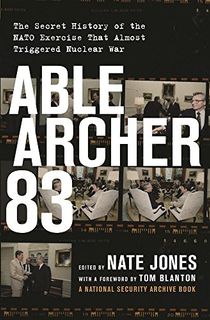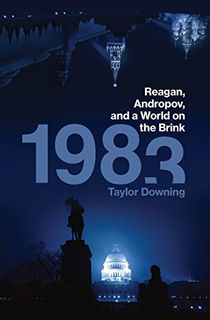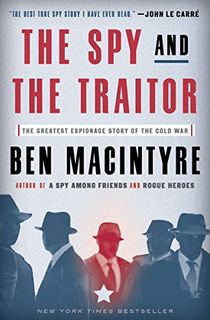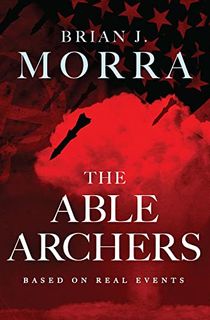The highly acclaimed Netflix series Turning Point: The Bomb and the Cold War premiered in early 2024. I was privileged to appear extensively in episode five of the series, “War Games,” which focused on the great Soviet Nuclear War Crisis of 1983.
Despite recent television coverage of the 1983 confrontation, most people think of 1962’s Cuban Missile Crisis when considering nuclear confrontation during the Cold War. One might ask, why are 1983’s events so little known?
First, 1983 was a fraught year, filled with other crises like the Hezbollah bombing of the US Embassy in Beirut, the US invasion of Grenada, and the terrorist bombing of the US Marine Corps barracks at the Beirut Airport. Second, the US government kept many of the facts highly classified until 2015. Third, to understand the events of the Soviet Nuclear War Crisis of 1983 one must “connect the dots” on many causal factors and separate events. The 1983 crisis was ultimately much more complicated than the Cuban Missile Crisis.
In the fall of ‘83, the Soviet Union and the United States were brought to the brink of war three times. The first time was in the aftermath of the Soviets’ shootdown of a Korean airliner. The second time was when the Soviet Union’s National Missile Defense Center detected what appeared to be several waves of nuclear missile launches originating from the United States. The final time was during the NATO nuclear war exercise called Able Archer 83. Moscow thought the NATO drill was “cover” for an actual nuclear first strike attack by the West.
The nuclear forces available to both the United States and the Soviet Union in 1983 were far more capable and destructive than those each country possessed in 1962, making this more recent confrontation all the more terrifying—and exciting to read about.
Here are six books that will give you a well-rounded overview of the 1983 crisis.

Able Archer 83
The foundational book on the Soviet Nuclear War Crisis of 1983, this book is an edited compendium of redacted, formerly classified documents released under the Freedom of Information Act after many years of effort by George Washington University’s National Security Archive. Able Archer 83 opens with an excellent summary of the context and the facts of the 1983 crisis. The rest of the book consists of the redacted documents themselves.
Since the book was published in 2016, the National Security Archive has continued to get classified documents released through FOIA and updates its website with new documents as they become available.

1983: Reagan, Andropov, and a World on the Brink
In my opinion, Downing’s book is the best nonfiction treatment of the 1983 nuclear crisis. Downing is a journalist, historian, and television producer and he does a terrific job of sifting through a complicated set of events and presenting them in a highly readable manner.

The Brink
Ambinder is a journalist and television producer, and he covers the same events as Downing, but his approach is more like that of a political reporter. His book is highly informative, provides a provocative slant, and is an enthralling read.

The Target Is Destroyed
At the time of publication, Hersh was one of the most famous investigative reporters in the world and The Target is Destroyed was quite controversial. His book is not a history of the entire 1983 crisis, but it is a detailed recounting of a critically important trigger event for the larger crisis: the Soviet shootdown of a civilian airliner, Korean Air Lines flight 007, on the first of September 1983. The Soviet attack killed 269 passengers and crew, including some 62 American citizens.
In the aftermath of the shootdown, the Soviet and American Air Forces confronted each other and came dangerously close to a shooting war. Hersh’s highly detailed micro-history of KAL 007’s shootdown is compelling and remains one of the best publicly available accounts, decades after its initial publication. Although it now appears to be out of print, it's still available for puchase on Amazon.

The Spy and the Traitor: The Greatest Espionage Story of the Cold War
Macintyre’s book covers more ground than the Soviet Nuclear War Crisis of 1983, but it is highly relevant because it offers particular insight into the role played by Soviet KGB officer Oleg Gordievsky in alerting British Intelligence to Moscow’s alarming reaction to the Able Archer 83 exercise. Unfortunately, Gordievsky’s crucial insight about the Soviets’ perspective and motivation was never delivered to US military intelligence officials in NATO, who were kept in the dark as to what the Soviets were thinking during the worst nuclear confrontation of the Cold War.

The Able Archers
Lastly, I will tout my own book, published by Koehler Books in 2022. The Able Archers is a fictionalized account of the Soviet Nuclear War Crisis based on the real events in 1983. I was a young Air Force Intelligence officer at the time and was personally involved at critical times before, during, and after the crisis. My novel provides readers with a thrilling account of the events as seen through the eyes of a young American officer, based on me, and a Soviet GRU officer who is based on GRU and KGB officers I knew in the 1980s. I wrote The Able Archers to educate and entertain and to provide the reader with a new perspective on these events.
Featured image courtesy of Brian J. Morra's official website





